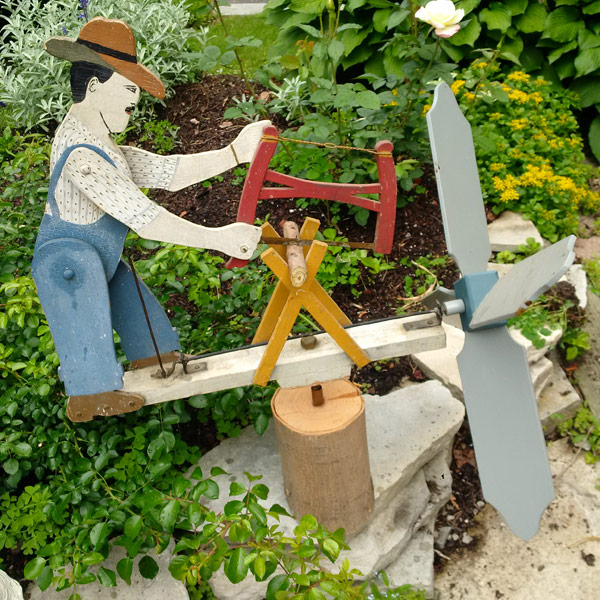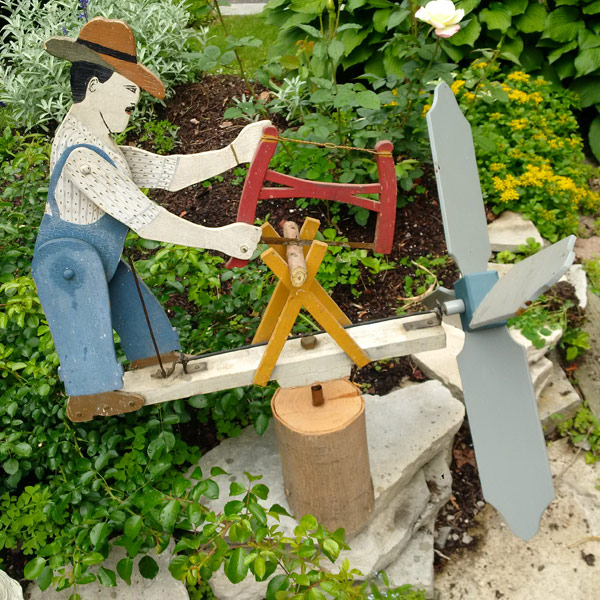By Shaun Markey –
I recently added this colourful “whirligig” to my folk art collection. In fact I had owned it many years ago after purchasing it here in Ottawa from the man who made it.

At the time, I sold the whirligig to my brother who has had it in his home ever since. A move to a new house prompted him to dispose of several items and I was only too happy to buy this piece back.
A whirligig is the name given to an object that spins in the wind. They are most often used as garden ornaments. The actual word comes from two Middle English words: “whirlen” (to whirl) and “gig” (top). Some whirligigs are made to also transmit sound which discourages rodents and other animals from entering the garden.
Whirligigs are a close cousin to the weathervane. The fans or blades at the end of the whirligig capture the force of the wind, transfer that energy and enable the device to activate and sustain its intended motion.
More recently, whirligigs have been recognized as an art form and many museums and art galleries have built up their own collections.
I have purchased several whirligigs over the years and remember stopping – more than once – at a house to admire a particularly nice example churning away in the front yard. On occasion, I would approach the homeowner with an offer to buy their whirligig and more often than not the piece went home with me.
The whirligig in this photograph has many features I like. First, it’s a generous size. The man stands roughly 20 inches in height. Once a breeze starts blowing, he saws a log in front of him. The sawing motion requires that his body be articulated at the hips and arms. The wind energy captured by the blades at the end of the whirligig is transferred to the man via a narrow metal rod that runs underneath the wooden base and up another similar rod, which is attached to his waist.
I really like the form of the man. It’s realistic, but at the same time has a folky and fun style.
Second, I was impressed (and still am) with the number and variety of paint used in the piece. There are nine different colours used in the body of the man, the saw and the sawhorse. Many whirligigs are made rather crudely but the creator of this one took the time to incorporate fairly fine detail.
Too often, whirligigs suffer from being left outdoors too long. This one was probably made around 1950. Given the quality of the paint and the generally excellent condition of this whirligig, I doubt this fellow spent much time cutting his log outside, if any at all. I estimate its retail value to be about $150.
Whirligigs are an interesting and genuine art form. Plus, they’re fun to collect, despite the challenges with displaying them indoors.
Shaun Markey is the author of a memoir called Folk Art in the Attic. Check out his website at folkartintheattic.blogspot.ca. If you have an antique or collectable and are curious about its past and approximate value, email a photo to shaunmarkey@rogers.com. Please make sure details are visible! Any extra information you can share about your treasure is helpful too. Your item – and its story- – might just be published in Shaun’s next column.
